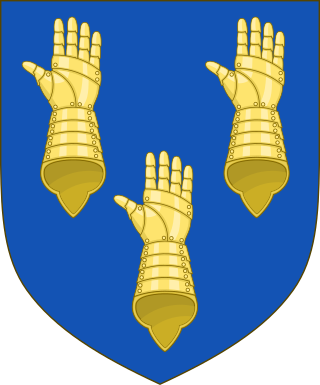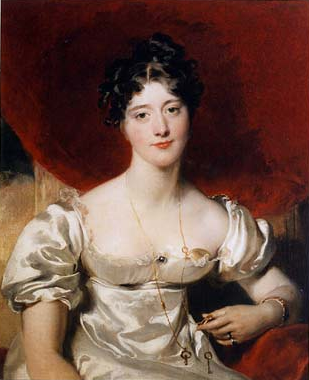Henry Vane is the name of:
The Peerage of the United Kingdom is one of the five Peerages in the United Kingdom. It comprises most peerages created in the United Kingdom of Great Britain and Ireland after the Acts of Union in 1801, when it replaced the Peerage of Great Britain. New peers continued to be created in the Peerage of Ireland until 1898.

Baron Inglewood, of Hutton in the Forest in the County of Cumberland, is a title in the Peerage of the United Kingdom.

Marquess of Londonderry, of the County of Londonderry, is a title in the Peerage of Ireland.

Baron Barnard, of Barnard Castle in the Bishopric of Durham, is a title in the Peerage of England. It was created in 1698 for Christopher Vane, who had previously served as a member of parliament for County Durham and Boroughbridge. Vane was the son of Sir Henry Vane the Younger and grandson of Sir Henry Vane the Elder. His grandson, the third Baron, notably served as Paymaster of the Forces and as Lord Lieutenant of County Durham. In 1754 he was created Viscount Barnard and Earl of Darlington, both in the County Palatine of Durham. Lord Darlington was the husband of Lady Grace FitzRoy, daughter of Charles FitzRoy, 2nd Duke of Cleveland, the illegitimate son of King Charles II by his mistress Barbara Villiers, 1st Duchess of Cleveland.
Earl of Darlington is a title that has been created twice, each time in the Peerage of Great Britain. Baroness von Kielmansegg, half-sister of King George I, was made countess of Darlington in 1722. This creation was for life only, and so the title expired on her death in 1725.

Charles William Vane, 3rd Marquess of Londonderry, was an Anglo-Irish nobleman, a British soldier and a politician. He served in the French Revolutionary Wars, in the suppression of the Irish Rebellion of 1798, and in the Napoleonic wars. He excelled as a cavalry commander in the Peninsular War (1807–1814) under John Moore and Arthur Wellesley.
This is a list of people who have served as Lord Lieutenant of Durham.

Henry Vane, 1st Earl of Darlington, PC, known as Lord Barnard between 1753 and 1754, was a British politician who sat in the House of Commons from 1726 to 1753 when he succeeded to a peerage as Baron Barnard.

William Henry Vane, 1st Duke of Cleveland, KG, styled Viscount Barnard until 1792 and known as The Earl of Darlington between 1792 and 1827 and as The Marquess of Cleveland between 1827 and 1833, was a British landowner, slave holder and politician.

This is a list of lords lieutenants of County Down.

George Henry Robert Charles William Vane-Tempest, 5th Marquess of Londonderry, KP, styled Viscount Seaham between 1823 and 1854 and known as The Earl Vane between 1854 and 1872, was a British aristocrat, businessman, diplomat and Conservative politician.

William Morgan Fletcher-Vane, 1st Baron Inglewood, TD, was a British Conservative Party politician.

Sir Henry Vane-Tempest, 2nd Baronet was a British politician. In early life his name was Henry Vane. He changed his name to Vane-Tempest when he inherited from his uncle John Tempest, Jr. in 1793.

Frances Anne Vane, Marchioness of Londonderry was a wealthy Anglo-Irish heiress and noblewoman. She was the daughter of Sir Henry Vane-Tempest, 2nd Baronet. She married Charles William Stewart, 1st Baron Stewart. She became a marchioness in 1822 when Charles succeeded his half-brother as 3rd Marquess of Londonderry.

Charles Stewart Vane-Tempest-Stewart, 6th Marquess of Londonderry,, styled Viscount Castlereagh between 1872 and 1884, was a British Conservative politician, landowner and benefactor, who served in various capacities in the Conservative administrations of the late 19th and early 20th centuries. After succeeding his father in the marquessate in 1884, he was Lord-Lieutenant of Ireland between 1886 and 1889. He later held office as Postmaster General between 1900 and 1902 and as President of the Board of Education between 1902 and 1905. A supporter of the Protestant causes in Ulster, he was an opponent of Irish Home Rule and one of the instigators of the formal alliance between the Conservative Party and the Liberal Unionists in 1893.

The Vane, later Vane-Tempest Baronetcy, of Long Newton in the County of Durham, was a title in the Baronetage of Great Britain. The Vane baronetcy was created on 13 July 1782 for Reverend Henry Vane, D.D., second son of George Vane of Long Newton. He was a descendant of Sir Henry Vane the Elder. Vane married Frances Tempest, daughter of John Tempest of Sherburne, Durham. When her brother, John Tempest Sr., died in 1771 naming the baronet's son as his heir, the younger Vane assumed by Royal licence the additional surname of Tempest in accordance with his uncle's will. Thus, when the 1st baronet died in 1794, his son became Baronet Vane-Tempest. This second baronet represented both the city and county of Durham in Parliament and was a well-known sportsman. He married Anne MacDonnell, 2nd Countess of Antrim. They had one child Lady Frances Anne, who married Lord Charles Stewart, later 3rd Marquess of Londonderry, who assumed the surname of Vane and in 1823 was named Earl Vane and Viscount Seaham. When Vane-Tempest died in 1813, the baronetcy became extinct.
Edward Herbert Jessel, 2nd Baron Jessel CBE, was a British politician.

Apollo University Lodge No 357 is a Masonic Lodge based at the University of Oxford aimed at past and present members of the university. It was consecrated in 1819, and its members have met continuously since then.










